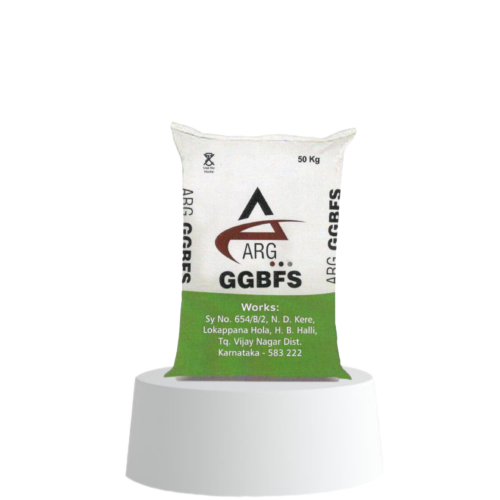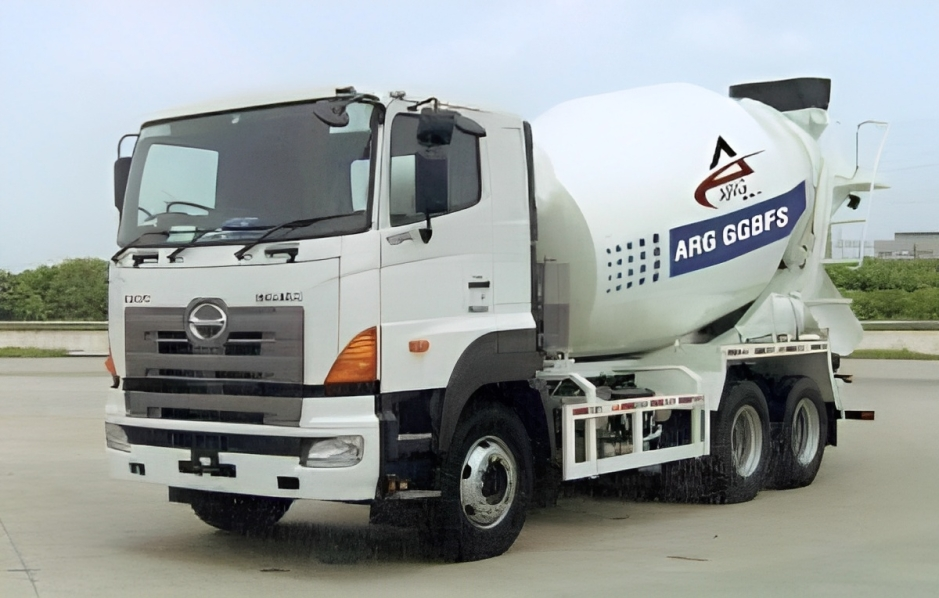GGBS (Ground Granulated Blast-furnace Slag)
GGBS replaces a substantial proportion of normal cement OPC in RMC.The mixing varies from 30%to 70% approximately (generally 50%). The higher the proportion, the better is durability forConcrete. GGBS is also used in other forms of concrete including site batched and precast.
Replacement of Portland Cement by adding up to 70% GGBS, reduce cement content in concrete from about 530 Kg/m3 to 160 Kg/m3 and despite of this large reduction of cement in concrete, ultimate strength is not affected, also considerable improvement in durability properties is observed.
GGBS slag is by product of iron and steel manufacturing process. It contains the entire basic constituent of OPC but not exactly in the same ratio and chemical form. Slag itself has no cementing property but when mixed with OPC, it develops hydraulic properties similar to cement. The calcium oxide (CaO) found in slag is tied up as calcium silicate, calcium aluminates and calcium aluminosilicates. Although these compounds are not identical to those found in tricalcium silicate, tricalcium aluminates etc), they hydrate when activatedPortland cement (i.e. by calcium hydroxidegenerated during the hydration of Portland cement. Since GGBS is almost 100% glassy, it is generally more reactive. This process of quenching is called granulation because it produces glassy granules similar in appearance to coarse sand, having excellent cementitious property when ground to high fineness and mixed with cement.
Replacement of OPC with GGBS increases the durability and work ability without affecting strength. Thus finally it is cost effective solution in current competitive market.
- Compressive Strength
| Ratio | Compressive strength N/mm2 | |||
| 7 days | 28 days | 90 days | % Development from 7 to 90 days | |
| 100% OPC | 40 | 53 | 60 | 50 |
| 80% OPC+20% GGBS | 35 | 52 | 57 | 63 |
| 70% OPC+ 30% GBS | 32 | 50 | 60 | 88 |
| 50% OPC+ 50% GBS | 30 | 47 | 56 | 87 |
| 30% OPC+ 70% GBS | 25 | 45 | 58 | 132 |
ADVANTAGES AND BENEFITS OF USING GGBS
SUPERIOR QUALITY CONCRETE
• Improved workability, pump ability and compaction characteristics for concrete placement
• Increased strength
• Reduced permeability
• More chemically stable
• High resistance to chloride penetration
• Very low heat of hydration
• Improved resistance to attack from fire
SUPERIOR APPEARANCE
• Improved surface finish
• Lighter and more even colour
• Enhanced reflectivity for greater visibility and safety
• Suppresses/eliminates efflorescence
LOW ENVIRONMENTAL IMPACT
• Use of GGBS extends the life cycle of concrete structures
• Enhanced durability, reduced maintenance and repair costs
• Reduces construction costs
BETTER VALUEFORMONEY
• Enhanced durability and strength longer life
• Enhanced architectural appearance reduced need for other expensive finishes or painting
• Lower maintenance costs
• Enhanced life cycle
• No additional premium on material costs
PROPERTIES OF CONCRETE MADE WITH GGBS BLEND WITH ORDINARY PORTLAND CEMENT
Plastic Concrete Water Demand
For concrete made with equal slump, lower water content is required compared to Ordinary Portland Cement. This will help in reduced capillary pores and hence concrete will be of better durability.
Stiffening time
Because GGBS is sower to react with water than OPC its use in concrete increases the stiffening time of concrete. This will help in more time available for placing the concrete.
Heat of hydration and early age thermal cracking. The rate of heat evolution associated with GGBS is reduced as the proportion of slag is increased. This helps in greater heat dissipation and reduced temperature rise which will reduce the likelihood of thermal cracks. Lower thermal cracks help in long term durability.
Chloride ingress
GGBS blended concrete is significantly more resistant to the ingress of chloride ions in concrete apart from reduced permeability. OPC used with GGBS blend chemically binds the chlorides with slag hydrates effectively reducing the mobility of chlorides the reducing the reinforcement corrosion risk.
Alkalinity
Despite the reduction in Ca(OH)2 caused by secondary slag hydration reactions the pH of paste remains at a level which is well in excess of that which would affect the passivity of the reinforcing steel.

.
.
.




